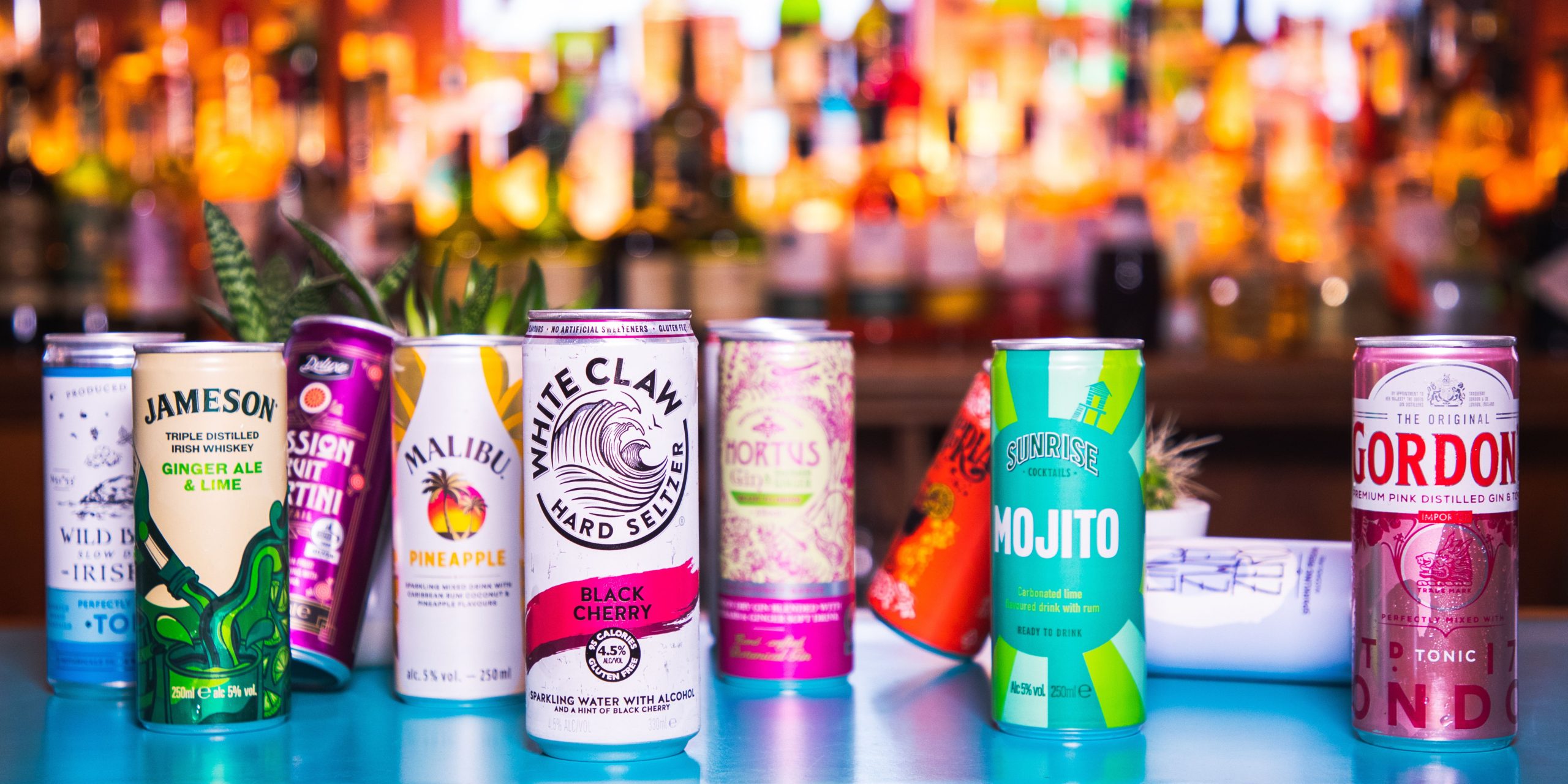Read Time: 7 Minutes |
As trends pick up speed and novelty reigns supreme, can the RTD category keep its seat at the table or will it fizzle out to irrelevance?
| By Cameron Mowat
The sun is out, which means it’s time for another hot girl summer. What’s the other key ingredient for a successful hot girl summer you ask? RTDs!
In an ever expanding world of cocktail culture, the ways to opt-in to quality cocktails get more and more varied with each passing year.
It might be bottled cocktails, or home cocktail kits, or the old fashioned just-going-to-the-bar method, however one particular way is taking the world by storm, with a huge uptick in the last two years especially: the ready-to-drink cocktail.
From Jameson, Ginger Ale & Limes to spiked iced lattes, the canned cocktail is the new vogue for the session, booting craft beer styles like Session IPAs from the spotlight and taking a large chunk of the low-ABV drinks’ market share.
While the RTD sector of the drinks industry isn’t new, its popularity is at an all time high. On the back of brands like White Claw, drinks businesses are investing millions into the style. But can the can keep its crown for long enough to become an essential part of the drinks industry like its ancient predecessors, or will the concept fade into obscurity when a new trend emerges?
Explosive Growth

RTDs have been on the market for years. The mid 2010s is when the culture began and RTDs experienced steady growth as the idea caught on and the quality of the liquid improved also. While it was clearly trending upwards, the explosive growth over the last 5 years has shocked the industry, upsetting the balance and especially the market shares of the major players in the drinks industry.
Market research from Mintel shows that from 2016 to 2022, spirit-based RTD sales alone have increased a whopping 226%, helping turn the industry into an over 9.6 billion dollar market. In the last two years alone that growth spiked wickedly, with NielsenIQ pointing to an 86.5% increase in sales from the beginning of 2020 alone. These figures make RTDs one of the fastest growing and profitable beverage styles in the industry.
The IWSR also predicts that this wild growth will continue for at least another two years. The market they’ll be taking the most from? The beer industry.
No growth of this magnitude can last forever though. The question still remains, can RTDs go the distance, or will these soaring heights turn to plummeting lows as the landscape of ‘what’s hot’ shifts again?
The Impact Of The Pandemic
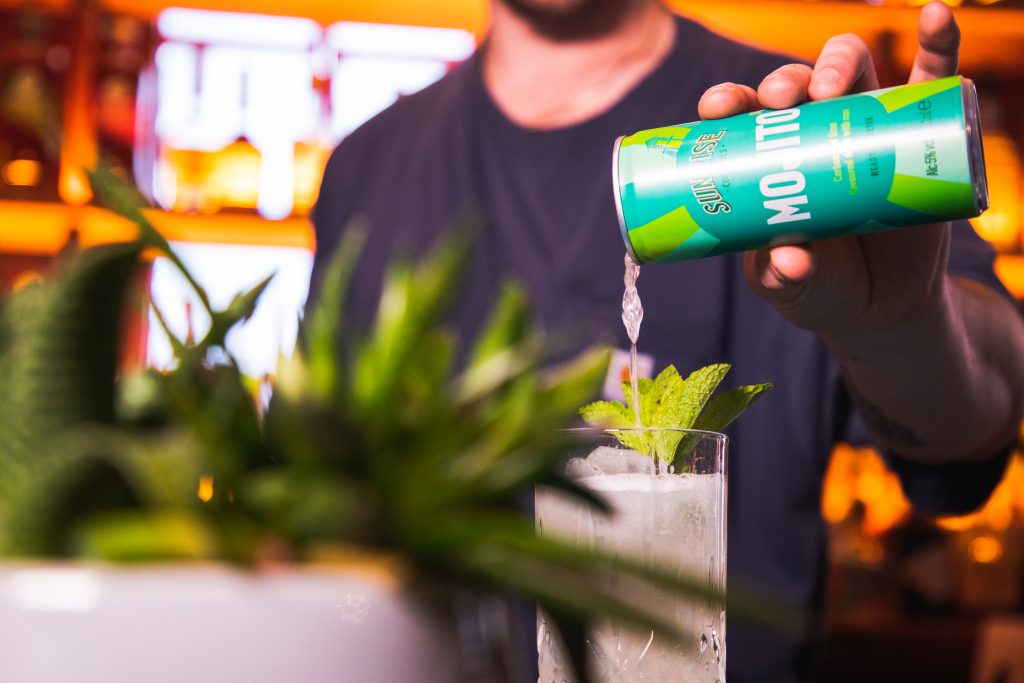
One of the main reasons for the atmospheric rise of RTDs that we’ve seen in the few years is of course the Pandemic. Cocktail historians will talk about this chaotic period as a turning point in the world’s drinking culture for years to come. While beer, wine and spirits were still available to the public, cocktails on the other hand suddenly became difficult to come by.
Suddenly people were presented with a choice if they wanted to continue to drinks cocktails: make them yourself at home or buy them pre-made. The RTD industry rose to the occasion, as we know, and have been rewarded for it.
However, now that the Pandemic winds down to a close (finger’s crossed), will the RTD market continue to grow, or will it stagnate into decline?
If the main motivation for people to drink RTDs was a lack of access to bar-made cocktails, then it would follow that as bars come back into the spotlight during reopening, then RTDs would naturally fade away, or at least fall back to their pre-pandemic numbers.
But if the culture has actually been changed, if drinking habits have been reformed permanently, then RTDs will naturally start encroaching into other parts of the off-trade drinks industry and settle in as a full-time member of the team.
The Claw Is Law
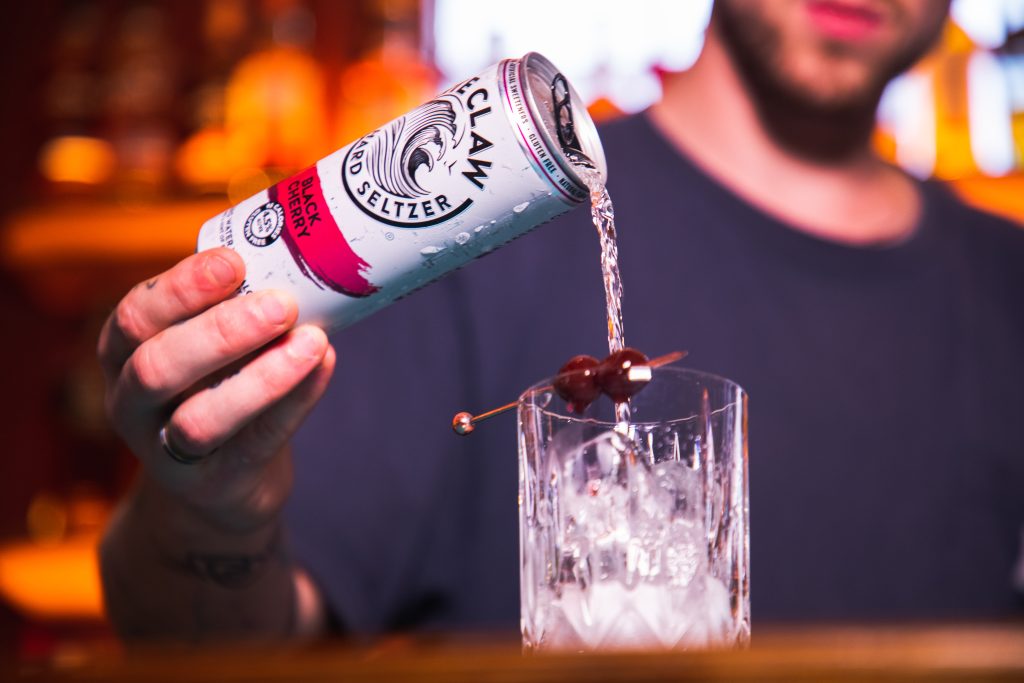
Brands like White Claw are the main driving force behind cementing the RTDs’ place in drinking culture.
You might argue that Hard Seltzers and RTD’s are not the same, that they’re cousins at best. We would argue that while there may be a distinction it’s mostly irrelevant. After all, the hard seltzer is effectively a Vodka Soda, and if a canned Gin & Tonic fits the RTD profile, so too can a grain spirit with flavoured sparkling water.
White Claw is one of the main players in the RTD game, and for good reason. Their marketing, from the genius name evoking both the serenity and wildness of nature to their focus on the Low-Cal culture tapping into the health and wellness space, has catapulted them to arguably the pinnacle of the canned cocktail competition.
For any brand it’s a huge mark of success when your product’s name enters the vocabulary of the time. Anyone that has spent any time in the States or with Americans will have probably heard the phrase ‘the claw is law’ or conversely, ‘there’s no law when you’re on the claw’ or similar expressions.
The main takeaway here is that White Claw has tapped into the zeitgeist perfectly, not only in terms of riding the wave (again pardon the pun) of the RTD sector’s growth, but also aligning themselves smoothly with the newest generation of drinkers, Gen Z.
Gen Z’s drinking habits are profoundly different from the Millennials’ and Boomers’. Not only do they tend to drink less across the board, but they also focus more on healthy and lower ABV options. Plus they are more interested in trying new things, and that novelty focus allows the RTD industry to keep pumping out new and interesting cocktail expressions, flavours and concepts to keep the Gen Z drinker entertained and engaged (take your canned sparkling Sangria for example).
White Claw and other RTDs fit the bill for the new generation, and no matter how much a generation is moved by novelty, what’s popular when we first enter the drinking world tends to maintain a special place in our hearts and the proverbial torch is often passed to the next wave of drinkers as they come of age.
What Makes A Trend Stick?
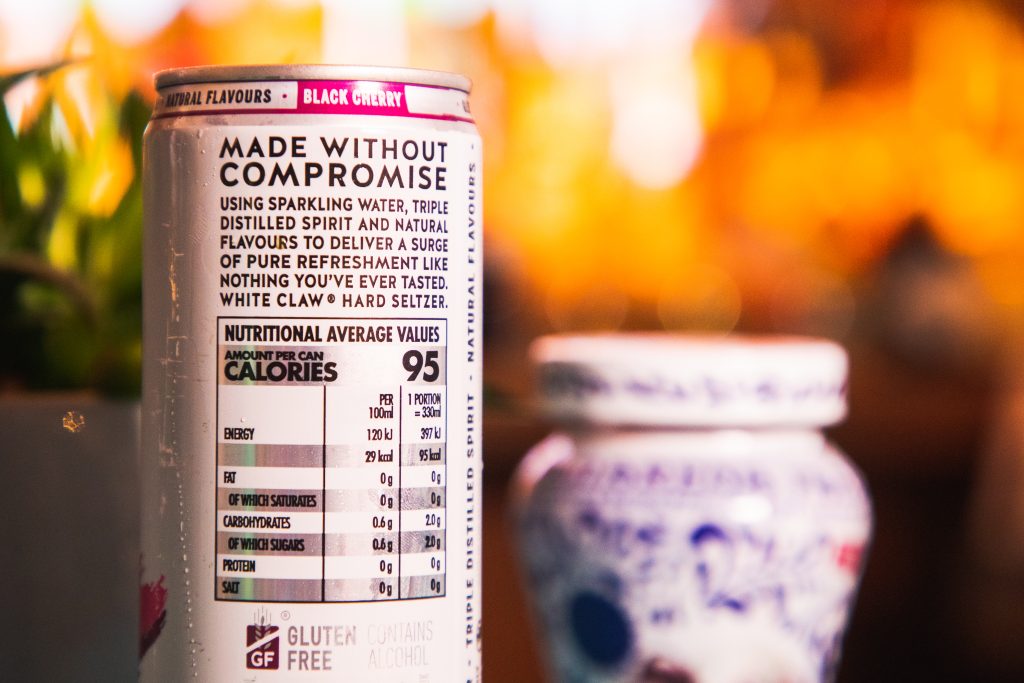
Despite the success of White Claw and other big names in the RTD market, it takes more than a few big players and some successful marketing campaigns to turn a trend into a permanent player.
There are many factors that can prevent a trend from being a firework, bright at first and fizzling away. We’re seeing more and more that trends can come and go in the space of months, even weeks with the rise of the Tik Tok mindset.
RTDs continue to demonstrate, however, that they have what it takes to go the distance.
One of the main strengths of many RTDs, as previously mentioned, is their alignment with another major and lasting trend, which is health and wellness. Low ABV options, with low sugar and low carbs suit the modern drinker far better than high ABV high sugar options. That being said, many RTDs miss the mark on this one, containing all the sugar of the cocktail cousins, if not more than drinks like beer and wine.
Premiumisation is another big factor that RTDs have been shifting towards. The stigma around ‘canned cocktails’ could have been the dagger for the RTD industry. You might remember, as we do, the first canned Espresso Martinis and Daiquiris for example that were, to put it lightly, not great. There has been a major shift, especially as large profits came in, towards quality in the RTD sector to overcome this. Is the quality as high as a freshly made cocktail? No, but at the price point the difference is acceptable.
The convenience aspect is also huge. RTDs fit in a beautifully easy to access space, giving consumers the tastes and flavour experiences that they would often have to make the journey to the bar for in previous years. Being able to crack open a few Pornstar Martinis or Jameson, Ginger and Limes sitting with your friends in the sun, far away from the expensive city watering holes, is one of the biggest advantages of the RTD market.
Maybe the most important point here is that RTDs are in many ways ‘too big to fail’ now. As mentioned earlier, the profit numbers are staggering. With so much invested in the industry, from manufacturing to marketing, there is little chance the drinks industry lets the RTD market go quietly into the night. For this reason RTDs will continue to adapt and overcome (hoo-rah) and find a way to satisfy the ever shifting landscape of drinks trends in the same way the craft beer trend did.
The Future of Drinking
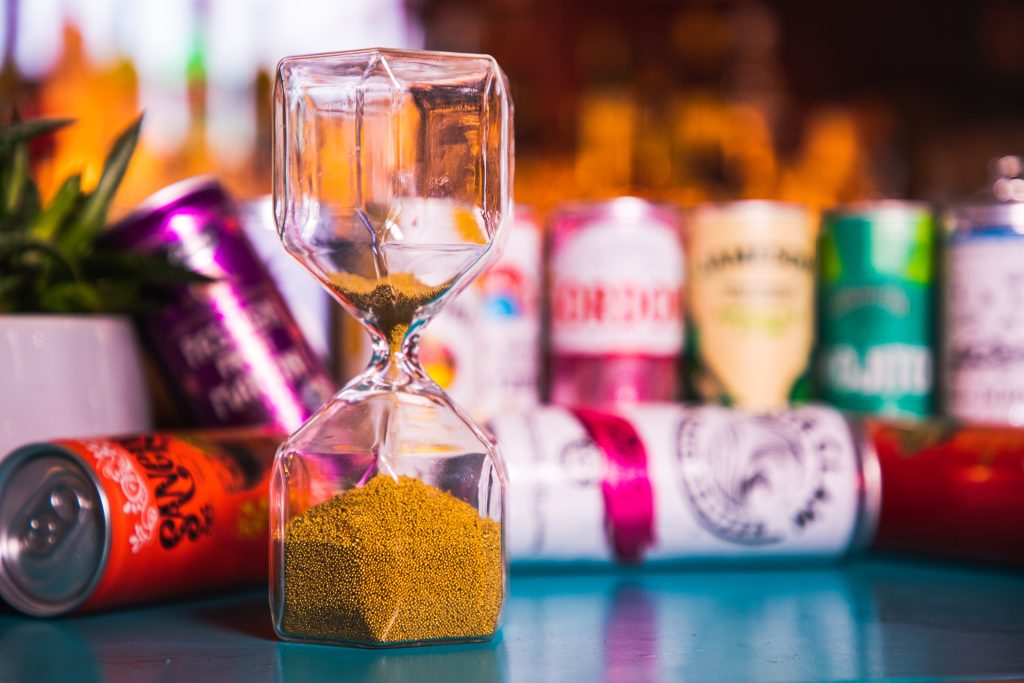
Market research suggests that the future of drinking lies in diversity. What does that mean in the drinks industry? Well, for example there is a huge trend towards ‘substitution’ and ‘blending’, which is the practice of swapping out or incorporating new beverage types, particularly low ABV or non-alcoholic, into the rotation a drinker might go through on a night.
RTDs obviously fit snugly into this movement. Moreover diversity also means diversity of choice, where novelty, as previously mentioned, is a big factor. RTDs are an extremely flexible category, and will be ready to meet the challenges that a focus on diversity might bring to the drinks industry.
Finally, a very interesting line jumps out of the IWSR research, ‘Companies are no longer selling products to groups of consumers, but are selling products that fit particular consumption occasions.’ The occasion, or the drinking context is taking the crown of how drinks brands approach sales. What better product than an RTD to fit the occasion? White Claw for the sunny festival, canned Espresso Martinis for the pre-drinks, and a Jameson, Ginger and Lime can for the house party.
RTDs appear to be here to stay. With so many routes to market, so many options for expansion and a new generation that sees convenience and novelty as the driving force behind their consumer choices, the only bubble that is ready to burst in the world of RTDs are the ones in the cans.

